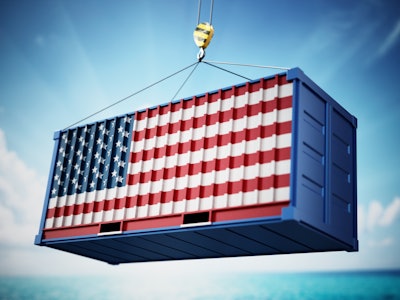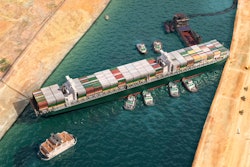
A majority of the container logistics industry (75%) is rethinking its logistics strategy in the next year, according to a survey from Container xChange.
“We foresee that COVID-19 and its new variants will continue to disrupt the port operations and labor capacity as we progress into the year 2022. Persistent unpredictability is warranted. We’ve also started to observe container prices and leasing rates going down. Once prices slide significantly, they risk crashing. If we look at the current demand, we see that the demand for containers hasn’t increased significantly,” says Christian Roeloffs, co-founder and CEO, Container xChange. “The current spike in rates is caused by a temporary supply crunch. But, with disruptions such as labor union conflicts at U.S. ports easing up, we’ll also see the capacity challenge improving. However, the ‘return to normal’ seems to be coming earlier than many of us first anticipated, and it might be as early as the second half of 2022.
From Container xChange:
- The top challenges for the industry remained finding spot on the vessel and surcharges by carriers. One-way leasing emerged as the most sought-after alternative as compared to getting equipment from the carriers.
- 65% said that the performance will either deteriorate further (11%) or seem to remain the same (54%) in the year 2022.
- When asked what alternatives compared to getting equipment from carriers attracted them, 50% of respondents said they resorted to one-way leasing followed by long-term leasing contracts (28%) and buying containers (22%).
- Overall, 71% of respondents said they were rethinking their logistics strategy and are looking for more diverse sourcing and resorting to holding more inventory.
- The main causes of container shortage this year, according to the respondents, were –shippers using boxes as storage (42%), container line failures (28%), inefficiencies in matching box owners to potential users (28%) and longer transit times and port congestions.
- When asked who emerged as the biggest winner of the global supply chain crisis, the industry unanimously echoed the opinion that container lines (64%) were benefitted the most out of the disruptions followed by shippers (21%) and freight forwarders (15%).
“2021 was an outstanding year for the shipping industry. The staggering earnings and profits for ocean freight companies have surpassed the combined industry profits made over the whole decade. It was also a year that showed that shippers were ‘willing’ to pay higher prices for shipping,” says Johannes Schlingmeier, co-founder and CEO, Container xChange said. “Now, those earnings and profits will need to prove that this money can be put to good use to improve service levels across the industry. This has to go beyond the traditional levers of investing in more container capacity, but also into landside infrastructure, inland transportation and infrastructure for cross-industry collaboration to build resilience for the industry.”





















